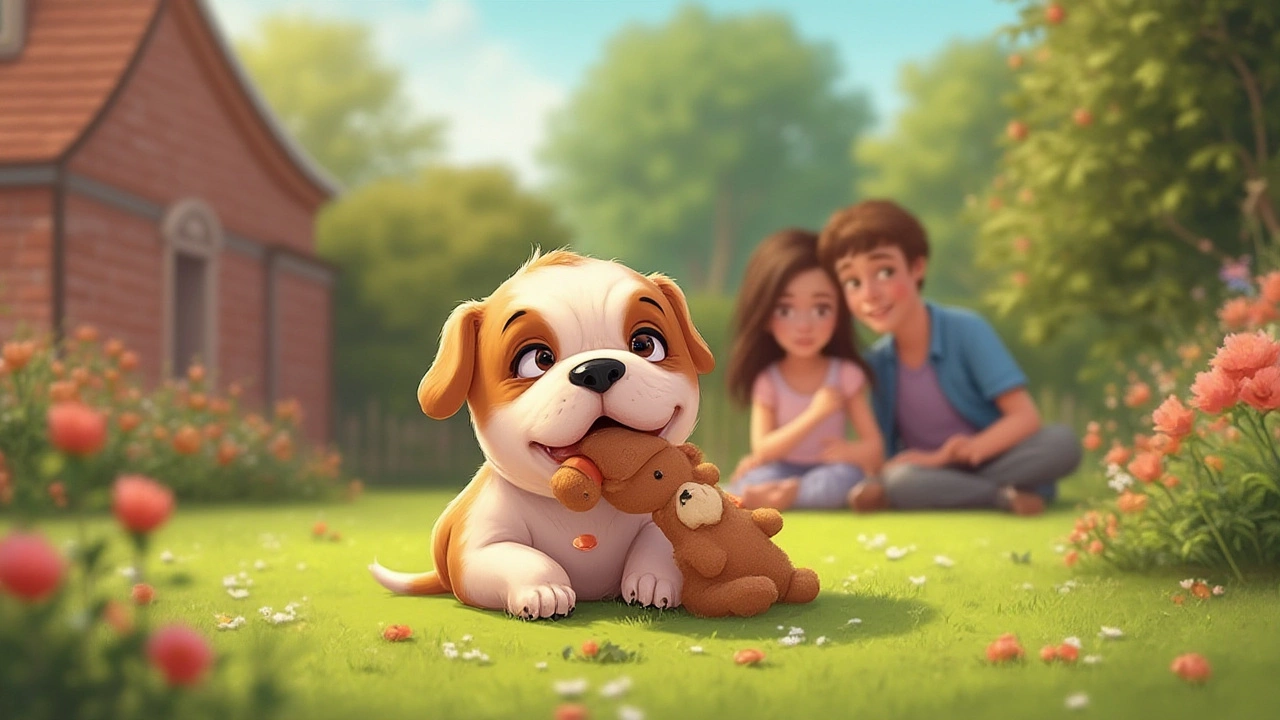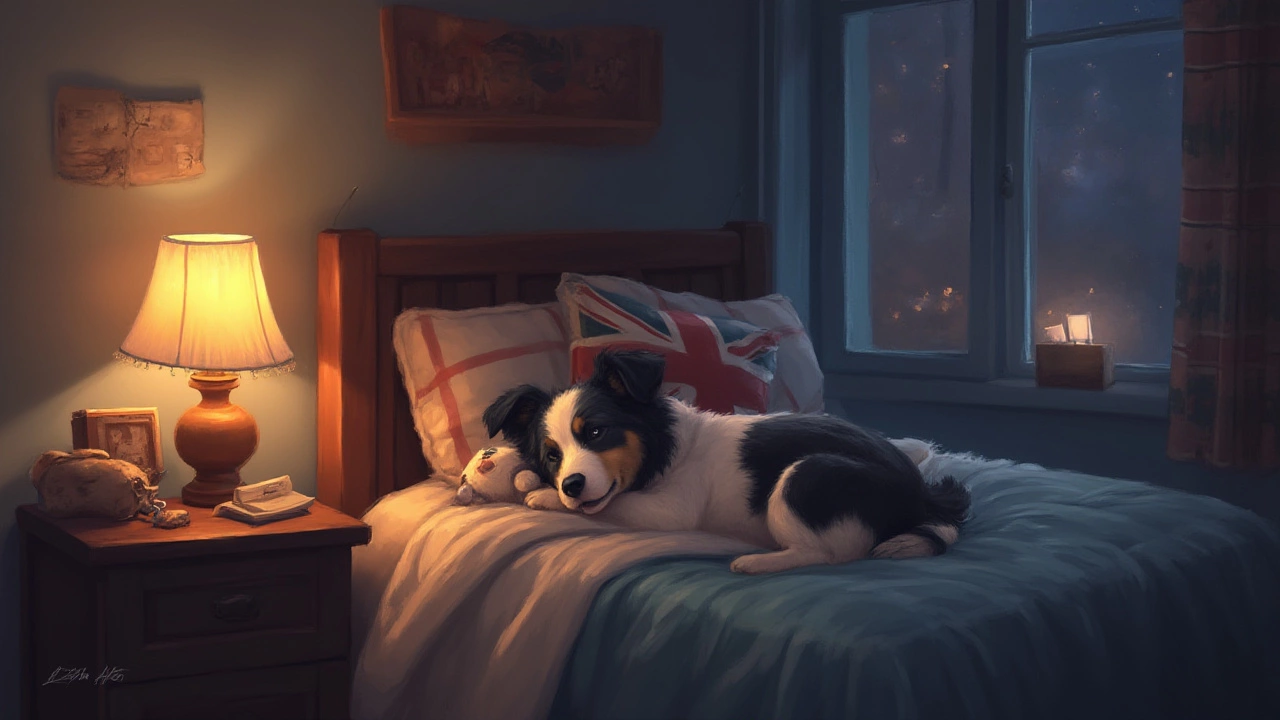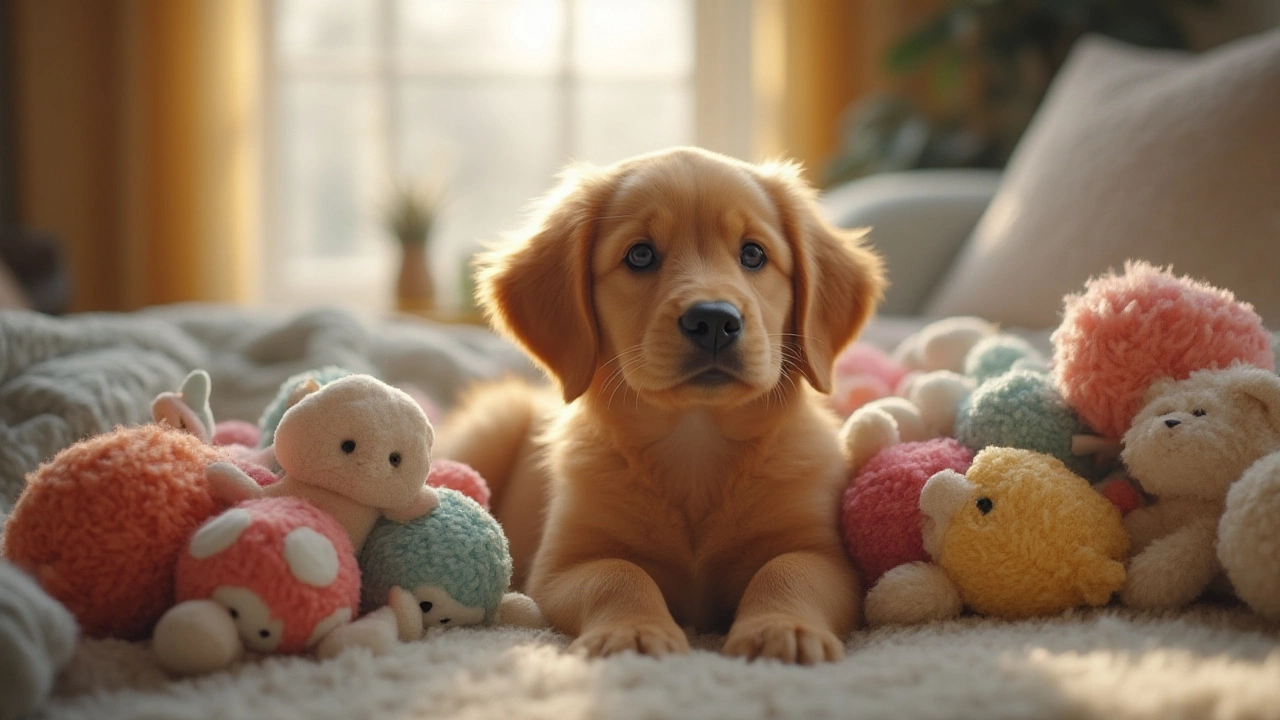Ever catch your new puppy huddled in a corner, nibbling on a sock or curled up on your favorite throw pillow? It looks ridiculously adorable, but there’s something deeper going on. Puppies are tiny emotional sponges. They soak up everything around them—the new smells, the strange sounds, the absence of littermates and mom—and they feel it all. While it’s easy to shrug off puppy clinginess as simple cuteness, comfort is a big deal for them. Puppies crave a sense of security, just like babies do. And here’s the secret: what you give them to hug, mouth, or sleep with can make their new world way less scary.
Why Puppies Crave Comfort: The Science Behind Cuddle Toys
If you’ve ever wondered why puppies act so needy, you’re not imagining things. For those first few nights in a brand new home, a puppy’s world is basically upside-down. Gone are the warm, reassuring bodies of their siblings. Everything smells different. Even the light and noise have changed. Puppies experience real stress during this transition. In fact, studies from animal behavior researchers at Cambridge in 2019 found that the cortisol levels (that’s the stress hormone) in puppies spike after they leave their litter. According to the American Kennel Club, most puppies go home between 8 and 12 weeks of age—right as their brains are processing separation and emotional bonds.
Comfort toys, or cuddle toys, step in as a makeshift solution for this gap. Soft toys replicate the feeling of a litter. Some toys are even designed to mimic a heartbeat or come scented with "mother" pheromones, which can make a world of difference for an anxious puppy. I remember when Bruno was a baby—his first week here, he whined and paced at night. A plush puppy toy with a pouch for a warm pack calmed him down almost instantly. According to PetMD, this isn’t just a fluke. Soft toys provide a tactile substitute for mom and siblings, especially if they’re scented or warmed up a little.
The science of it? Cuddle toys can help form secure attachments. There’s growing evidence that puppies who experience comfort from objects or gentle sounds at an early age are more likely to adjust quickly to new situations. It’s the same reason children carry around a favorite blanket. It’s all about emotional security. Puppies with access to cuddle toys tend to sleep longer and show less anxiety, according to a 2022 survey by the Association of Professional Dog Trainers.
But not every soft plush will do. Safety matters. Avoid toys with small sewn-on pieces (think: button eyes) that come loose. Go for toys that are made specifically for puppies, which are built to survive enthusiastic chewing. Chewability is key. Teething starts around three to four months, and puppies, just like Misty with a new scratching post, look for anything to soothe their gums. Soft, squeaky toys work wonders, but rope or fabric toys with hidden stitching can also distract from chewing on your shoe... at least in my experience!
Here’s something else I noticed with Bruno—he gravitated toward toys that retained a warm scent. I’d pop his toy under my shirt for a half hour (yes, I know, I’m that dog parent), and suddenly it became his chosen snuggle buddy. This isn’t random. Scent plays a huge role in early dog bonding. It reminds puppies they’re not totally alone, even if their human smells funny compared to other dogs.

The Practical Benefits: How Cuddle Toys Help Raise Happier Puppies
Let’s get practical. Cuddle toys aren’t just about making your puppy look cute for Instagram. There’s some real evidence that they help with everything from sleeping through the night to easier crate training. You might be surprised just how big the difference can be.
- Faster adjustment to new homes: Puppies with a familiar-smelling cuddle toy (sometimes sent home from the breeder) tend to settle in within days rather than weeks, according to survey results published by the American Veterinary Society of Animal Behavior.
- Less nighttime crying: Toys mimicking a mother’s heartbeat can reduce crying and whimpering, especially during the first few weeks.
- Proper chewing habits: Durable plush toys are safer and more appealing than gnawing on shoes or furniture, channeling teething behaviors toward something safe.
- Comfort during vet visits or travel: A familiar toy can soothe a puppy when they’re outside their routine, reducing fear and stress-related accidents.
- Early training aid: Puppies respond well to positive association. If you use a cuddle toy as a reward for calm crate time, you’re planting the seeds for dogs who actually like chilling out alone once in a while.
Here’s a real-life example: Misty (my cat) once stole one of Bruno’s cuddle toys, a little stuffed fox, and he spent half a day searching for it. As soon as the fox reappeared, he instantly relaxed and curled up for a nap. That instant comfort? It’s emotional security in action. Puppies, just like people, reach for their favorites in tough moments.
And let’s talk about crate training. This stage can mean lots of midnight whining (I’ve walked the hallway more times than I can count). The most common mistake is sending a puppy into a cold, empty crate. But add a warm, familiar soft toy? The difference is night and day. Research from the University of Lincoln (UK) found that puppies with access to a plush, scent-rich toy had up to 50% fewer vocalizations at night during their first week home.
Many trainers recommend "transition toys." That’s a cuddle toy introduced before the puppy leaves its birth home—sometimes even sleeping among the litter for a few nights. When you bring it to your home, it smells like mom and siblings, making that first night less traumatic. Some breeders now routinely send home one of these pre-scented toys with every puppy.
One overlooked benefit? Toys offer more than just emotional comfort. They can be used for gentle play, especially for younger puppies not ready for rough games. Apart from emotional security, these toys also help wear out little brains before bedtime (puppies sleep up to 18 hours per day, but good play means better sleep!).
Even if you own more than one pet, a puppy will likely pick one special toy—sometimes to the exclusion of all others. I’ve had to buy duplicate foxes after Misty carried the original off to her hidden supply closet.
Other times, a puppy will cycle through a few different toys. That’s normal. As their needs change from comfort to teething to play, the favorite type of toy may shift. What matters most is providing safe options and paying attention to which one gives them that “all is right in the world” feeling.

How to Choose (and Use) the Right Cuddle Toy For Your Puppy
Choosing a cuddle toy isn’t rocket science, but it’s easy to get overwhelmed in a pet store aisle stacked to the ceiling with squeaky chickens and smiling llamas. Here’s a cheat sheet for finding a comfort toy that’ll actually help your puppy, not just clutter the floor.
- Size matters: Pick a toy just large enough that your puppy can easily cuddle but can’t accidentally swallow. For really tiny breeds, even a regular cat toy may be the right fit—that was my hack with Bruno when he was palm-sized.
- Go soft, but sturdy: Look for tightly sewn seams, no loose plastic parts, and fabrics tough enough for teething. Fleece and microfiber are good bets.
- Check for added features: Some of my favorite toys for Bruno include a battery-powered heartbeat simulator or a pocket for a warming pack.
- Wash and rotate regularly: Puppies are magnetically attracted to mud, so plan to launder toys weekly. Most good brands toss right into the machine (check the label!).
- Scent is your superpower: Try “priming” a new toy by rubbing it on yourself or leaving it where the puppy sleeps for a night before full use. This makes it familiar and instantly comforting.
A final tip: Don’t be alarmed if a puppy bonds so tightly to one toy that they balk if you try to wash it. Let a favorite toy dry naturally, and try swapping with a backup so you don’t cause a meltdown (trust me, been there!).
If you like stats and numbers, here’s a handy breakdown of benefits compiled from several dog-owner surveys and behavior research reports between 2021 and 2024:
| Puppy Comfort Need | % Puppies Who Benefited | Notable Result |
|---|---|---|
| Transition anxiety reduced | 78% | Settled more quickly in new home |
| Teething relief | 82% | Less destructive chewing on household items |
| Nighttime sleep comfort | 67% | Fewer vocalizations/whining |
| Crate training aid | 74% | Easier crate acceptance |
| Stress during travel/vet | 61% | More relaxed behavior |
Start with one or two puppy cuddle toy choices. Watch your puppy’s reaction closely. Some will latch onto a snuggly bear; others love a flat, crinkly toy shaped like a raccoon. Don’t overthink it—pick toys designed for dogs, keep things safe, and remember: offering comfort isn’t spoiling. Puppies who feel safe and happy build confidence for life. And besides, nothing beats the sight of a tiny furball snoozing nose-to-nuzzle with their favorite plush toy. Trust me. You’ll get why comfort matters the first night your home is quiet and your puppy’s finally at peace… at least until breakfast.

